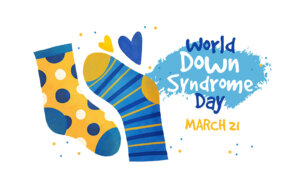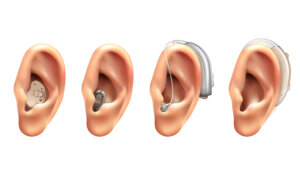World Thalassemia Day (WTD) is observed every year on the 8th of May. This day commemorates the struggles of patients who are suffering from this genetic disorder and raises awareness about the disease and its symptoms. Thalassemia affects approximately 4.4 out of every 10,000 live births throughout the world. This condition causes both males and females to inherit the relevant gene mutations equally because it follows an autosomal pattern of inheritance with no preference for gender.
WHAT IS THALASSEMIA?
According to The International Thalassemia Day 2022 blog post, the WTD theme is “Be aware, Share, Care”. The theme is an open call to action to promote awareness of thalassemia, its symptoms, causes, associated myths and misconceptions, and the global impact of the disease. It also serves as a powerful reminder that everyone has a substantial role to play in caring for people living with thalassemia.
Thalassemia is a group of genetic blood disorders characterised by less oxygen-carrying protein (haemoglobin) and fewer red blood cells in the body than normal. The severity depends upon the type of Thalassemia. Centre for Disease Control 2022
HISTORY
In 1994, the Thalassemia International Federation (TIF) established May 8 as International Thalassemia Day. This day was declared an international observance in the memory of George Englezos; the son of TIF president and founder (Panos Englezos) and all patients diagnosed with thalassemia. Sri Latha 2022
CAUSES OF THALASSEMIA
According to an article by John Hopkins Medicine 2022, genetic mutation is the cause of thalassemia.
NOTE: Thalassaemia is caused by mutations in the DNA of cells that makes haemoglobin, which a child inherits from their parents. It’s not caused by anything the parents did before or during the pregnancy, and you cannot catch it from someone who has it.
HOW THALASSEMIA IS INHERITED.
A publication by the Centre for Disease Control 2022, states that genes come in pairs, and you inherit 1 set from your mother and 1 set from your father. To be born with the main type of thalassaemia; beta thalassaemia, a child must inherit a copy of the faulty beta thalassaemia gene from both of their parents. This usually happens when both parents are “carriers” of the faulty gene, also known as having the “thalassaemia trait”. Thalassemia carriers do not have thalassaemia themselves, but there’s a chance they could have a child with thalassaemia if their partner is also a carrier.
If both parents have the beta thalassaemia trait, there’s a:
- 1 in 4 chances each child they have will not inherit any faulty genes and will not have thalassaemia or be able to pass it on.
- 1 in 2 chances each child they have will just inherit a copy of the faulty gene from 1 parent and be a carrier
- 1 in 4 chances each child they have will inherit copies of the faulty gene from both parents and will be born with thalassaemia
Another type of thalassaemia, alpha thalassaemia, has a more complex inheritance pattern because it involves 4 potentially faulty genes, rather than just 2.
- Children of parents who are carriers of the alpha thalassaemia trait will be born with the condition if they inherit 3 or 4 copies of the faulty gene.
- Children who inherit 1 or 2 copies will be carriers.
TYPES OF THALASSEMIA
There are 2 main types of thalassemia according to an article by John Hopkins Medicine 2022.
- Alpha Thalassemia: Alpha thalassemia occurs when some or all the 4 genes that make haemoglobin (the alpha-globin genes) are missing or damaged.
- Beta Thalassemia. Beta thalassemia is caused by damaged or missing genes. 2 specific genes are involved. There are several types of this disorder:
There are 4 types of alpha thalassemia, and 2 types of beta-thalassemia, they include the following:
- Alpha thalassemia silent carrier. One gene is missing or damaged, and the other 3 are normal. Blood tests are usually normal. Your red blood cells may be smaller than normal. Being a silent carrier means you don’t have signs of the disease, but you can pass the damaged gene on to your child. This is confirmed by DNA tests.
- Alpha thalassemia carrier. Two genes are missing. You may have mild anaemia.
- Haemoglobin H disease. Three genes are missing. This leaves just 1 working gene. You may have moderate to severe anaemia. Symptoms can worsen with fever. They can also get worse if you are exposed to certain medicines, chemicals, or infectious agents. Blood transfusions are often needed. You have a greater risk of having a child with alpha thalassemia major.
- Alpha thalassemia major. All 4 genes are missing. This causes severe anaemia. In most cases, a baby with this condition will die before birth.
- Beta thalassemia major (Cooley’s anaemia). There are two damaged genes. This is the most severe form of this disorder. People with this condition will need frequent blood transfusions. They may not live a normal lifespan.
- Beta thalassemia minor or thalassemia trait. Only one gene is damaged. This causes less severe anaemia. People with this type have a 50% chance of passing the gene to their children. If the other parent is not affected, their children will also have this form of disorder. This type is further divided into:
- Thalassemia minima: There are few or no symptoms.
- Thalassemia intermedia: This causes moderate to severe anaemia.
SYMPTOMS OF THALASSEMIA
A publication by NHS UK 2022, stated the following symptoms of thalassemia:
- Anaemia: Almost everyone with thalassaemia major or other serious types will develop anaemia. Thalassemia can cause mild or severe anaemia, which can be life-threatening, and occurs when your body does not have enough red blood cells or haemoglobin. The severity and type of anaemia depends on how many genes are affected and frequent blood transfusion are usually needed for life to stop anaemia from becoming severe. It typically causes:
- Tiredness and a general lack of energy
- Shortness of breath
- Pounding, fluttering, or irregular heartbeats (palpitation)
- Pale skin
- Yellowing of the skin and eyes (jaundice)
- Excessive iron content in the blood: Most people with thalassaemia major or other severe types will also be at risk of developing a range of health problems caused by a build-up of iron in the body. It’s usually a side effect of repeated blood transfusions. Many people with this disorder are given iron replacement by mistake, as this happens when a lack of iron is believed to cause their anaemia. Excessive iron can be harmful, so, it is important to see a hematologist and get the right diagnosis. Excess iron in the body can cause:
- Heart problems – including problems affecting the heart muscle (cardiomyopathy), an irregular heartbeat , and heart failure.
- Swelling and scarring of the liver (cirrhosis)
- Delayed puberty
- Low levels of oestrogen (in women) or testosterone (in men)
- Diabetes
- Problems with the thyroid gland (hypothyroidism) and parathyroid glands (hypoparathyroidism)
- Lifelong treatment with medicine to stop iron from building up to harmful levels will usually be needed. This is known as chelation therapy.
- Other Problems: Thalassaemia major or other severe types can also sometimes cause several other problems. These includes:
- Delayed growth during childhood
- Small stones in the gallbladder (gallstones), can cause inflammation of the gallbladder (cholecystitis), abdominal pain, and jaundice
- Unusual bone growth, such as an enlarged forehead or cheeks
- Weak, fragile bones (osteoporosis)
- Reduced fertility – some people with thalassemia may need fertility treatment to help them have children
MYTHS AND FACTS ABOUT THALASSEMIA
The following are myths and facts about thalassemia, according to a post by the CDC UK 2022:
Myth: Thalassemia carrier couples will always have Thalassemia Major children.
Fact: That is not true. When both the partners are Thalassemia carriers there is a 25 percent chance of having a Thalassemia Major child, 50 percent Thalassemia Minor and 25 percent normal i.e., not even a carrier. And if only one or none of the couple is a carrier, none of the children will be a Thalassemia Major.
Myth: There is no treatment for Thalassemia Major.
Fact: Thalassemia Majors can live a normal life if they are given an adequate blood transfusion and iron chelation therapy. Thalassemia can be prevented by pre-marital screening or early pregnancy screening followed by marriage counseling and antenatal diagnosis if required.
Myth: Thalassemia cannot be cured.
Fact: Thalassemia can be cured by bone marrow transplantation, but it requires HLA (human leukocyte antigen) matched siblings. However, HLA-matched donor is not always available.
TREATMENT OF THALASSEMIA
The treatment for thalassemia depends on the type and severity of the disease involved as stated by a newsletter by Kokilaben Dhirubhai Ambani 2022. Treatment options include:
- Blood transfusion: More severe forms of thalassemia often require frequent blood transfusions, possibly every few weeks. Over time, blood transfusions cause a build-up of iron in your blood, which can damage your heart, liver, and other organs.
- Bone marrow transplant: Also called a stem cell transplant, a stem cell transplant might be an option in some cases. For children with severe thalassemia, it can eliminate the need for lifelong blood transfusions and drugs to control iron overload. This procedure involves receiving infusions of stem cells from a compatible donor, usually a sibling
- Chelation therapy: This is a treatment to remove excess iron from your blood. Iron can build up because of regular transfusions. Some people with thalassemia who don’t have regular transfusions can also develop excess iron. Removing excess iron is vital for your health.
COMPLICATIONS OF THALASSEMIA
People with moderate thalassemia have an increased risk of infection and suffer from iron overload. Some people with severe thalassemia have other health problems, like bone deformities, and heart, or liver disease. Kokilaben Dhirubhai Ambani 2022.
CONCLUSION
It is possible to live a healthy life with thalassemia, genetic screening and counseling can be done at any time to find out if you have the thalassaemia trait and are at risk of having a child with thalassaemia.










